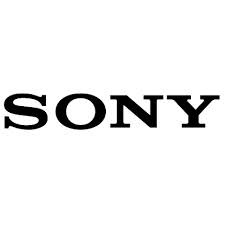Some of the biggest hedge funds that helped make Apple Inc (AAPL.O) a stock market darling lost faith and dumped their stakes in the fourth quarter, fueling the massive drop in the iPhone maker’s share price.
Noted stock pickers including Leon Cooperman, Eric Mindich and Thomas Steyer unloaded billions of dollars of Apple shares between September 30 and December 31, according to disclosure documents filed on Thursday.
Shares of Apple rose to an all-time high of $705.07 on September 21 but ended 2012 down more than 24 percent from that peak, as concerns about increasing competition and declining profit margins weighed.
The shares also may have dropped because their price rose too much, too fast.
“The stock just went up so much in early 2012 and then was coming back to earth,” said Justin Walters, co-founder of Wall Street research firm Bespoke Investment Group. “Three months from now, we’ll be seeing a lot of the people who sold starting to pick it up again.”
The fourth-quarter sellers avoided even deeper losses. Apple’s shares have lost 12 percent so far this year. The shares were up $1.95, or 0.4 percent, at $468.96 on the Nasdaq on Thursday.
Cooperman’s Omega Advisors fund dumped its entire stake of more than 266,000 shares during the fourth quarter, according to its required quarterly disclosure form filed with the Securities and Exchange Commission.
Mindich, named the youngest partner ever at Goldman Sachs before starting his Eton Park Capital Management fund in 2004, got out of Apple entirely in the fourth quarter after making big sales in the third quarter as well. Eton owned 600,000 shares at the beginning of 2012.
Farallon Capital, the hedge fund founded by Steyer, sold 137,000 shares. Steyer, who once worked on the Goldman Sachs risk arbitrage desk under Robert Rubin, stepped down at the end of the year from the firm, which he founded in 1986. Rubin served as U.S. Treasury secretary from 1995 to 1999.
Jana Partners, an activist fund run by Barry Rosenstein, also unloaded its entire Apple stake of more than 143,000 shares.
PROFITABLE TRADES
Despite the plunge in Apple’s stock price, most of the managers likely exited their positions with substantial profits because they bought years earlier.
Rosenstein and Cooperman, for example, both started gathering their stakes in the middle 2010, at a time when Apple shares traded below $300.
At the time, the company’s iPhone 4 was beset by alleged faulty reception, a problem that became known as “antennagate.” Apple’s then-chief executive, the late Steve Jobs, famously dismissed the issue, saying “we don’t think we have a problem.” But Apple offered customers a free bumper case that was supposed to minimize any issues.
Customers did not seem to care, snapping up millions of iPhones and sending Apple’s share price up almost 50 percent over the next year.
Apple came under further scrutiny last week from prominent hedge fund manager David Einhorn. Einhorn’s fund, Greenlight Capital, owned more than 1 million shares of Apple at the end of September. Greenlight’s updated regulatory filings are to be released later today.
Einhorn filed a lawsuit to block changes in Apple’s policy for issuing preferred stock. Instead, Apple should issue a new class of preferred stock to share more of its $137 billion cash hoard with shareholders, Einhorn said.
Apple Chief Executive Tim Cook dismissed the moves as a “silly sideshow” on Tuesday.
SOME TRIMMED
Not all well-known hedge fund fans of Apple cut ties in the fourth quarter. Some only trimmed their holdings.
Philippe Laffont, who worked under famed hedge fund manager Julian Robertson before striking out on his own at Coatue Management, sold about 18 percent of his Apple shares. Coatue ended the year with a still sizable 643,000 shares.
Chase Coleman, another manager who worked for Robertson, reduced the Apple stake at his Tiger Global Management fund by 19 percent to just over 1 million shares.
Robertson’s own Tiger Management LLC fund trimmed its Apple stake by 28 percent to about 42,000 shares.
Large hedge funds are required to disclose their U.S. stock holdings within 45 days after the end of each quarter.










Is usually that an Interstate 12 Volt battery in the engine compartment? Surely it really is not stock while we have all noticed lots of converted cars given that at a single time finding a 6 Volt battery became hard.